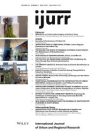In the debate on metropolitan governance, a commonly expressed hypothesis is that the reconstruction of statehood can take metropolitan governance along a variety of paths. This is especially true for Germany, where we can identify a great diversity of organizational forms of cooperation at the level of metropolitan agglomerations. This article addresses the question of how diversity within a country with more or less uniform institutional structures can be explained on the basis of a comparison of three German regions. We examine whether and how such differences can be explained as a combination of structural and other variables. Our starting hypothesis is that case‐specific structural variables matter — for example, the position of the core cities of the regions in the international hierarchy of cities, the economic structure of the regions, or the dominance or polarization within the regional party system. Furthermore, the hypothesis will be considered that spatially embedded cooperative actor behaviour and actor‐related factors, including political leadership and specific incentive structures or windows of opportunities, also matter. We conclude that such a double reading of the transformation of metropolitan governance is the most appropriate way to understand differences in metropolitan governance arrangements.
Details
Written by:
HUBERT HEINELT, KARSTEN ZIMMERMANN
Digital Object Identifier (DOI)
10.1111/j.1468-2427.2010.00989.x
About DOI
Read full article as PDF
Read full article as HTML
See the references for this article
